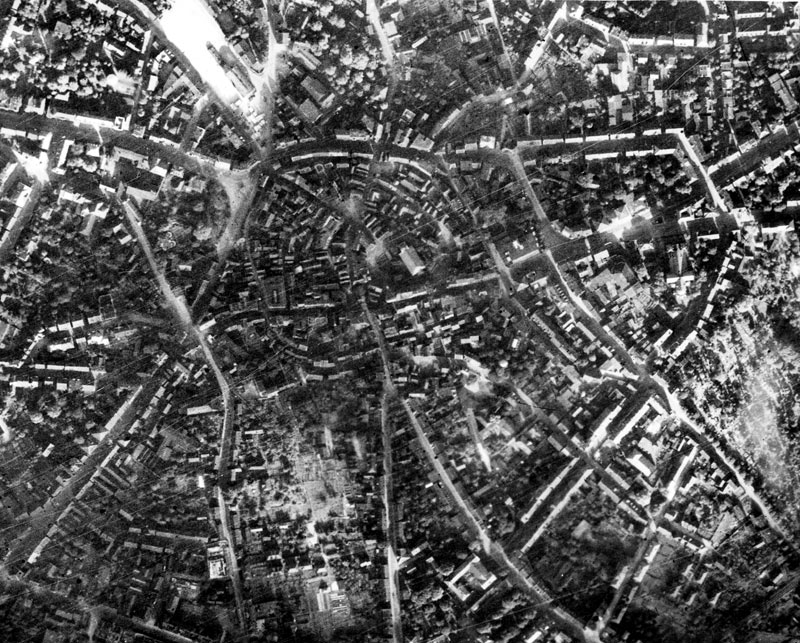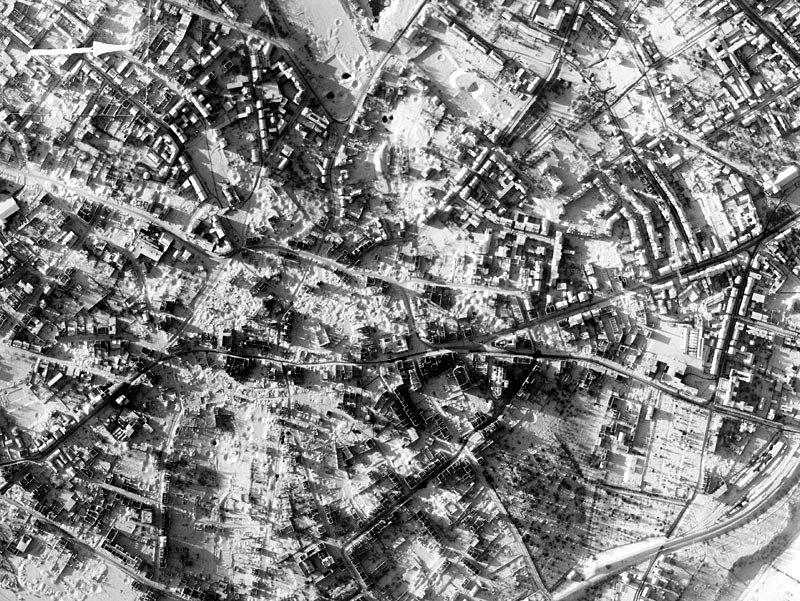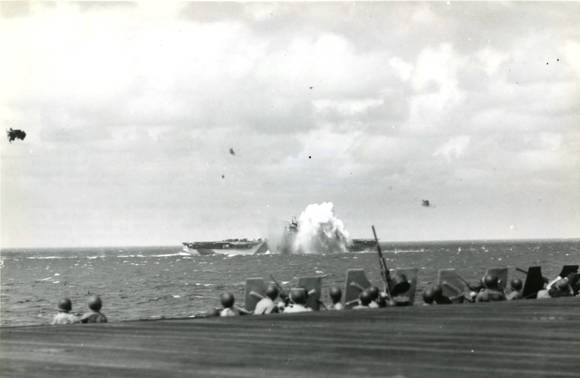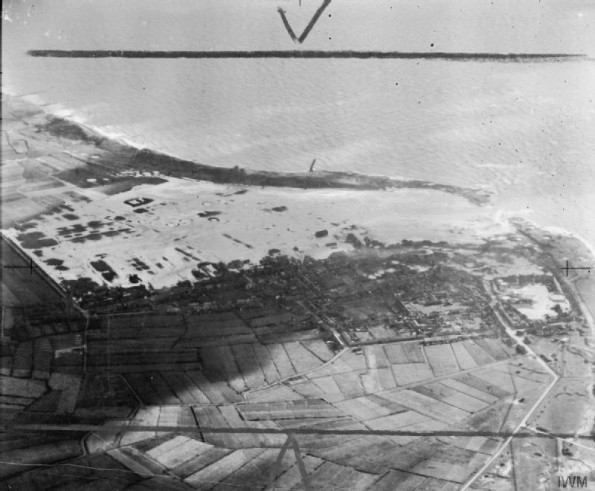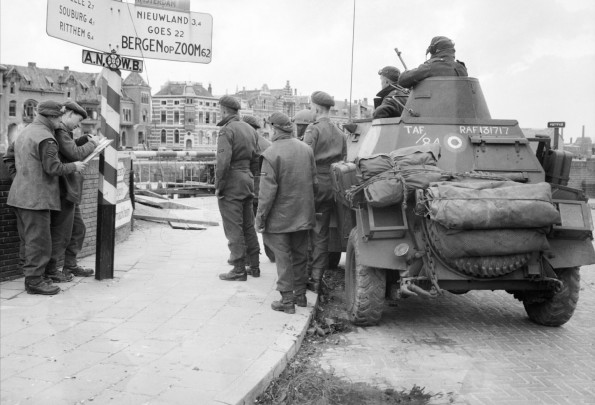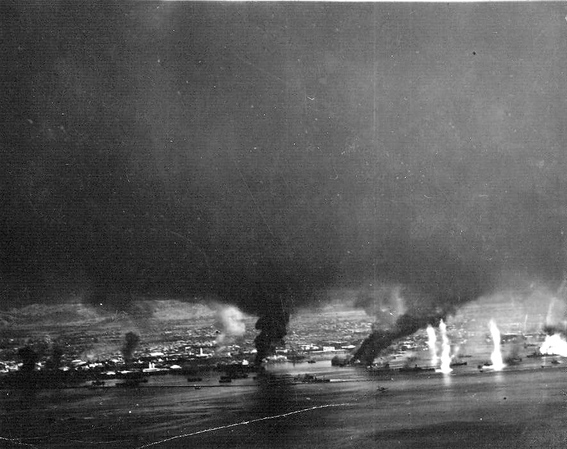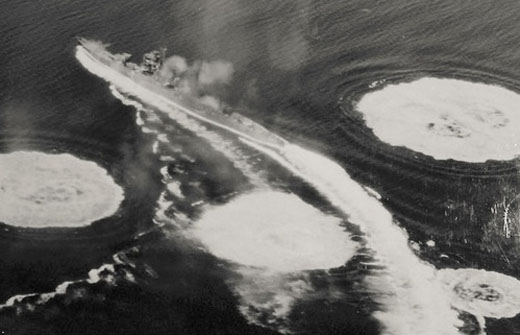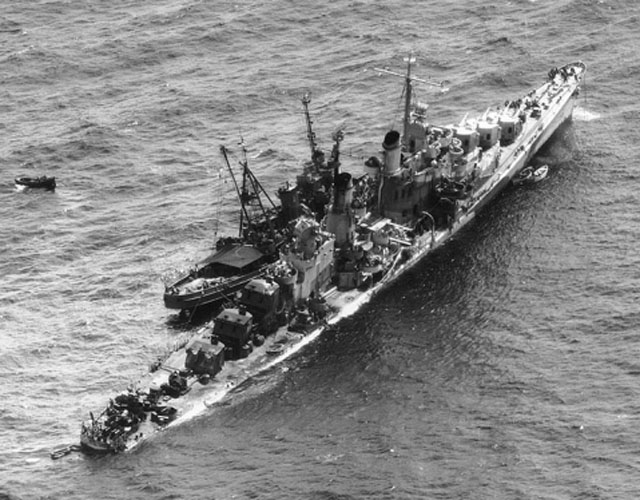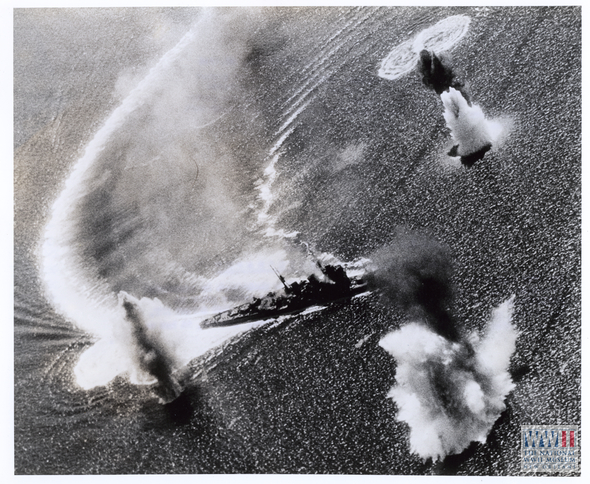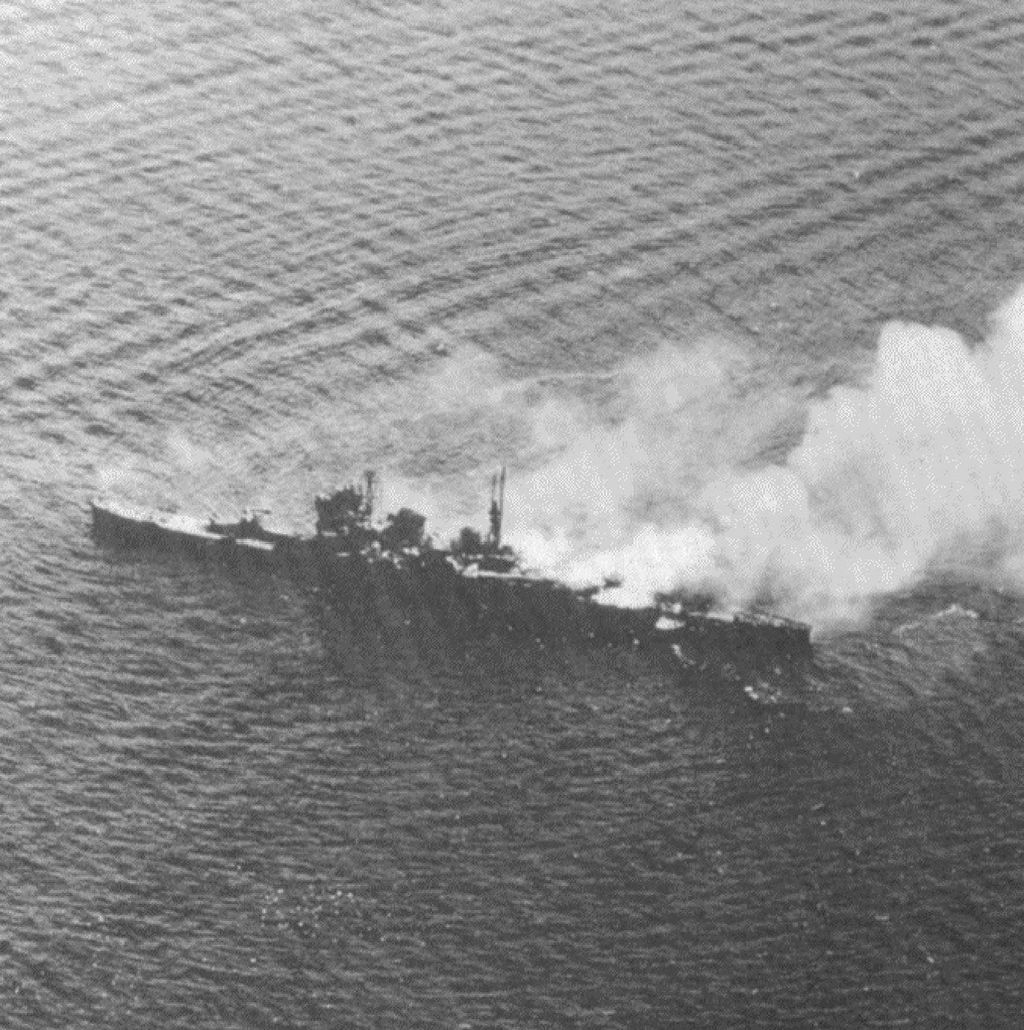Air Operations, Bonin Islands
30th Heavy Bomb Group B-24s attack shipping.
[Air Operations, CBI
BURMA- Approximately 70 10th Air Force P-47s attack the airfield at Lashio, a marshalling yard at Kanbalu, two occupied towns, artillery batteries, and targets of opportunity along the Burma Road and the rail line between Naba and Wuntho.
- 49 14th Air Force fighter-bombers attack stores and targets of opportunity in the Chefang, Kweihsien, Mangshih, and Wanling (Burma) areas.
Air Operations, Central Pacific
Task Force 50 carrier aircraft attack Wake Island.
[Air Operations, East Indies
- FEAF B-24s attack shipping near in the Sunda Islands.
- B-25s and fighter-bombers attack troop concentrations, lines of communication, and airfields on Halmahera and northeastern Celebes.
- A-20s and fighter-bombers attack Amahai, Ceram and targets of opportunity in southern Ceram.
- 7 58th Very Heavy Bomb Wing B-29s unable to reach their primary target at Singapore attack a refinery on Sumatra.
Air Operations, Europe
RAF BOMBER COMMANDDaylight Ops:
- 173 Lancasters of No. 3 Group carried out a G-H raid on Solingen. Results of the raid are not observed, because of the complete cloud cover, but German reports show that this was an outstanding success. Most of the bombing falls accurately into the medium-sized town of Solingen. 1,300 houses and 18 industrial buildings are destroyed and 1,600 more buildings are severely damaged.
- 1 Lancaster is lost.
- These 3 near-perfect raids in 24 hours - the area-bombing raid on Bochum marked by Pathfinders, the selective attack on the Dortmund-Ems Canal by No. 5 Group and the No. 3 Group G-H raid on Solingen - are good examples of the versatility and striking power now possessed by Bomber Command. All groups had taken part, dispatching 1,098 sorties and dropping 5,130 tons of bombs accurately on the targets.
- The loss of 28 bombers from the Bochum raid also shows, however, that the German defences could still be effective.
- 1 Wellington safely flies an RCM sortie.
Minor Ops:
- 65 Mosquitos are sent to Stuttgart in 2 waves and 6 are sent to Aschaffenburg.
- There are no losses.
GERMANY:
- 396 1st Bomb Division B-17s attack a marshalling yard at Frankfurt am Main.
- 333 2nd Bomb Division B-24s attack a marshalling yard at Karlsruhe.
- 219 3rd Bomb Division B-17s attack a marshalling yard at Ludwigshafen.
- 177 3rd Bomb Division B-17s attak an oil-industry (secondary) target at Ludwigshafen.
- 89 heavy bombers attack various targets of opportunity.
- 12 heavy bombers and 6 of 626 VIII Fighter Command escorts are lost.
GERMANY:
- 160 9th Bomb Division B-26s and A-20s attack dumps in and around Hamburg.
ITALY:
- 12th Air Force B-25s and B-26s mount more than 300 sorties against bridges leading down from Brenner Pass and in the northeastern Po River valley.
AUSTRIA:
- in the 15th Air Force's largest single mission of the entire war against a single target, 500 B-17s and B-24s, escorted by 337 fighters, attack the Vienna/Floridsdorf oil refinery with more than 1,100 tons of bombs.
- 52nd and 325th Fighter Group P-51 pilots escorting these bombers down 10 Axis aircraft over Hungary between 1315 and 1435 hours.
- 24 15th Air Force B-24s attack German Army troop concentrations around Mitrovica and a marshalling yard at Podgorica.
Air Operations, Japan
- 4 28th Composite Bomb Group attack Matusuwa and Onnekotan.
- 3 B-24s attack the Kataoka naval base.
- 4 B-25s attack Torishima Island at minimum altitude.
- B-24s down 1 Japanese Navy fighter, as do the B-25s.
Air Operations, Malaya
53 of 76 58th Very Heavy Bomb Wing B-29s dispatched from the Calcutta area attack the Singapore naval base while FEAF B-24s attack Bima. 2 B-29s are lost.
Air Operations, New Guinea
Nearly 50 V Bomber Command A-20s support Allied ground forces in the Sarmi area.
[Air Operations, Pacific
53 B-29s from the 20th US Army Air Force make a round trip of 3,700 miles from Calcutta to bomb coastal installations around Singapore and the Pangkalan Brandon oil refinery on the island of Sumatra, Japan's main source of aviation fuel.
[Air Operations, Philippines
- US carrier aircraft from Task Group 38.1, Task Group 38.2, and Task Group 38.3 attack Japanese airfields on Luzon and sink a previously damaged Japanese heavy cruiser. FEAF B-24s and V Fighter Command P-40s attack barges and airfields in the central Philippines.
- Throughout the day, in almost continuous action from 0625 to 1700 hours, US carrier-based fighters down 97 Japanese aircraft at sea and over Luzon, especially around Clark Field on Luzon. Also, 35th Fighter Group P-47s down 2 Ki-61 'Tony' fighters and 1 Ki-43 'Oscar' fighter over Negros between 1105 and 1130 hours.
- The USS Lexington is struck by a kamikaze, which kills 182 members of her crew.
Air Operations, Volcano Islands
24 of 36 73rd Very Heavy Bomb Wing B-29s dispatched from Iselyh Field on Saipan attack two of Iwo Jima’s three airfields.
[Eastern Front
FINLANDA detachment from the Soviet XXXI Rifle Corps makes contact with Finnish troops at Ivalo as German forces in the area retreat into Norway. In two weeks the XXXI Rifle Corps has advanced a total of 94 miles.
[Greece
British forces land at Salonika.
[Middle East
Lord Moyne, Walter Edward Guiness, British Resident Minister in the Middle East, is assassinated in Cairo by two members of the Zionist Stern Gang.
[Pacific
- US carrier aircraft from Task Group 38.1, Task Group 38.2, and Task Group 38.3 attack Japanese airfields on Luzon and sink a previously damaged Japanese heavy cruiser. FEAF B-24s and V Fighter Command P-40s attack barges and airfields in the central Philippines.
- Throughout the day, in almost continuous action from 0625 to 1700 hours, US carrier-based fighters down 97 Japanese aircraft at sea and over Luzon, especially around Clark Field on Luzon. Also, 35th Fighter Group P-47s down 2 Ki-61 'Tony' fighters and 1 Ki-43 'Oscar' fighter over Negros between 1105 and 1130 hours.
- The USS Lexington is struck by a kamikaze, which kills 182 members of her crew.
Philippines
Over the next 2 days Vice-Adm J. S. McCain, who has replaced Mitscher in command of TF 38, leads 3 groups of the force in attacks on targets on Luzon and the waters nearby. Among the carriers involved is the new Ticonderoga (CV-14). The Americans lose 25 planes and manage to destroy about 400 of the Japanese force.
One Japanese cruiser, the Nachi which was damaged in a collision with the cruiser Mogami at the battle of the Gulf of Leyte, is sunk by submarine attack and a second badly damaged and forced to beach. The Japanese also lose patrol boat No. 107 to the carrier-based planes. The US carrier Lexington (CV-16) is badly damaged by kamikazes.
There are further attacks by the 382nd Inf of the US 96th Inf Div against Bloody Ridge, west of Dagami. Tanks and artillery force the Japanese to a limited withdrawal.
[Western Front
In the Scheldt sector, the II Corps of the Canadian 1st Army continues to advance rapidly in Walcheren Island. While the headquarters of the British I Corps sends forward several units toward the Maas, the US 104th Div, less a certain number of elements of the 414th Inf Regt sent to support the Polish 1st Div in their advance on Moerdijk, prepares to advance toward Aachen.
The 5th Div, XII Corps of the British 2nd Army, clears the south bank of the Maas. In the VIII Corps sector, the 7th Arm Div approaches the area of Meijel from the south and the 15th Div from the north. The 3rd Algerian Div, II Corps of the French 1st Army, continues the offensive against Gerardmer, taking Rochesson and Menaurupt.
The formations of the other Allied armies take up their positions for the general offensive against the Rhine.
[Images from November 5, 1944
|
|
|
|
|
|
|
|
|
|
